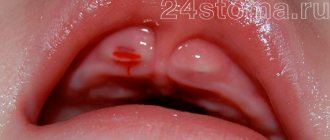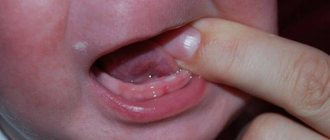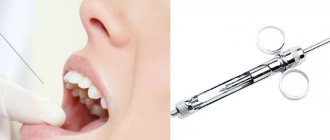9 months of bearing a baby is a short and at the same time long period during which a woman can be overcome by various kinds of ailments. The peculiarities of the situation impose serious restrictions on the list of drugs designed to eliminate the health problems that have arisen. Homeopathic medicines belong to a relatively safe category of medicines. A popular medicine in this group, which is often used in the treatment of pregnant women, is Viburkol. In what cases can Viburkol suppositories be prescribed during pregnancy?
37th week of pregnancy for baby
At the 37th week of pregnancy, the baby’s height is approximately 48 cm, and his weight is 2,600 g. Externally, the fetus is almost no different from a newborn; all facial features are developed, and cartilaginous tissue is clearly visible. The accumulation of subcutaneous fat at this stage of pregnancy makes the body contours softer and rounder. The baby’s skin gradually smoothes out, it is no longer as pink as in the previous weeks of intrauterine development, and the integument gradually becomes lighter. The baby's body is still abundantly covered with lubricant, but the amount of vellus hair decreases noticeably, vellus hair remains only on the shoulders and back, and in some babies it disappears almost completely.
This week the accumulation of fatty tissue continues. It reaches a maximum of 15% of the child’s total body weight. It is difficult to overestimate the importance of adipose tissue for newborns; it is this tissue that protects the child from overheating or hypothermia, since the baby’s thermoregulation system after birth is not yet sufficiently formed and continues to develop in the first months of the little person’s life.
At this stage, not only the volume of subcutaneous fat increases, but also the muscles and skeleton intensively develop. The child constantly moves his arms and legs. These unique workouts help increase muscle mass. The baby also makes rhythmic breathing movements that strengthen the intercostal muscles and diaphragm, preparing the respiratory organs for childbirth.
How to give the drug to a child
Obviously, this herbal remedy really helps relieve acute symptoms, but how to give the drug to a child? Usually one candle 2-3 times a day is quite enough. In special situations, when the pain is too severe, more frequent use is allowed. In such cases, suppositories can be placed at intervals of half an hour, but the maximum duration of such intensive use of the drug is 2 hours.
It is recommended that a child under one year of age take half a candle twice a day. If a very young baby’s teeth begin to erupt, that is, in the first months of life, then in such situations experts allow the use of a quarter of a whole candle up to 4 times a day. It is better to discuss the exact dosage with your treating specialist.
On a note! How long does it take for Viburkol to work? As the active components of the drug are absorbed through the intestinal walls, they gradually reduce the temperature and pain. The sedative effect is usually observed half an hour after the introduction of the suppository, and the inflammation subsides only as a result of repeated use.
The use of the drug helps the child fall asleep peacefully
It is better to light a candle before bedtime - this way the child can get a good night’s sleep and rest. Keep in mind that when placing a suppository, there is still a risk of the drug leaking, especially if the child remains in an upright position. The product is also used for teething without fever, to relieve swelling, inflammation and pain.
Pregnant woman at 37 weeks
As the due date approaches, pregnant women begin to notice the appearance of their precursors, that is, certain signs and changes that occur under the influence of hormones. A woman’s body is preparing to give birth to a child, progesterone gives way to the dominant role of the birth hormone estrogen, and the pregnant woman’s well-being changes.
From the 37th week, expectant mothers may observe the following changes:
- slight loss of body weight;
- reduction in abdominal volume;
- the appearance of training or “false” contractions and an increase in their intensity;
- discharge of mucus from the cervix.
The nature of the stool changes, it becomes weaker, aching pain in the lower back of varying intensity may appear, and the fundus of the uterus descends. The woman notes some signs on her own, others are observed by the gynecologist during a routine examination.
Precursors do not appear in all women. Some expectant mothers notice only some of the symptoms listed above, while others observe signs of impending labor not two or three weeks before the due date, but just a few hours. Both the appearance of precursors at the 37th week and their absence are normal and depend on the individual characteristics of the woman’s body.
This week, the female body is intensively preparing for the birth of a child. If the fetus is positioned correctly, head down, it gradually lowers, goes to the lower part of the uterus, presses it to the body and bends its limbs, intuitively taking the most comfortable position for passing the birth canal. The consequence of fetal movement is prolapse of the uterine fundus. The abdomen lowers, the pressure on the diaphragm decreases significantly, the pregnant woman can breathe easily, and the shortness of breath that plagued her in the previous weeks disappears. The pressure on the stomach also decreases, heartburn, a feeling of heaviness after eating and other unpleasant sensations disappear. Moving your baby can put pressure on your bowels and bladder. A pregnant woman at this stage often experiences the urge to urinate and may suffer from frequent loose stools. The reason for frequent bowel movements is not only the mechanical effect of the uterus on it, but also an increase in the content of estrogen in the body, hormones that promote the excretion of fluid. At the 37th week, the expectant mother can have bowel movements up to 3-4 times a day and at the same time observe significant dilution of the stool.
Clinical picture of diarrhea during pregnancy
Dehydration due to diarrhea can also negatively affect the fetus.
Do not forget that diarrhea is not an independent disease, but only a manifestation of the main pathological process. It is often accompanied by other symptoms:
- general weakness;
- temperature increase;
- nausea and dizziness;
- chills;
- headache;
- dehydration;
- lack of appetite or feeling of heaviness in the stomach;
- flatulence.
When to see a doctor urgently:
- there is mucus with blood streaks in the stool;
- diarrhea is accompanied by high fever and vomiting (nausea);
- severe dizziness;
- The color of the stool is dark, almost black.
38th week of pregnancy: development of the unborn baby
At the 38th week, the fetus is fully formed, so childbirth at this stage is no longer dangerous for both mother and baby. The weight of the fetus is about 3 kg, but this figure can vary significantly between babies; the weight depends on the individual characteristics of the mother and child, body structure and other factors. The body length of a newborn is approximately 50 cm.
All organs and systems at a period of 38 weeks are characterized by physiological and morphological maturity, they are completely ready for work. At this stage, the baby is preparing for childbirth, making breathing movements and preparing the intercostal muscles for breathing. The lung tissues are washed with amniotic fluid, which helps maintain the required level of surfactant covering the baby's lungs from the inside. All elements of the respiratory system are ready for use. With the first breath after birth, the alveoli begin to transfer oxygen from the air into the blood, gas exchange occurs, and the respiratory and circulatory systems begin to work intensively.
Treatment for retrochorial hematoma
It is recommended to treat retrochorial hematoma, mainly because only there it is possible to ensure truly complete physical rest and the absence of any stress. No promises to “lie down all the time” at home can be realized - there will always be a bunch of urgent household chores that you want to do - from cleaning to laundry. In addition, the hospital can provide emergency assistance at any time - intravenous administration of hemostatic agents, for example. If it is not possible to go to a hospital, then you should consider the option of a day visit to the clinic or staying with us for a couple of days.
Bed rest is recommended, and in order to restore the outflow of blood, it is advised to lie down with a cushion, for example made from a rolled blanket, under the pelvic area. To prevent congestion in the intestines, it is recommended to follow a diet: exclude legumes, spicy foods; products that strengthen stool or enhance intestinal motility (chocolate, coarse fiber). The intestines overflowing with gases put pressure on the pregnant uterus and increase the tone of the uterus, which increases the threat of miscarriage and increases the size of the hematoma. Also, to reduce the risk of increased uterine tone, you need to limit the consumption of strong tea and coffee.
Drug therapy consists of using drugs that improve blood clotting, due to which bleeding stops and the hematoma stops growing (tranexam, dicynon, vikasol). To relieve hypertonicity of the uterus, due to which the hematoma can grow, antispasmodics (no-spa, metacin, suppositories with papaverine) are used. In order to normalize hormonal regulation in the body, metabolic vitamin therapy is used. Progesterone preparations are used. In this case, the scheme and route of administration are selected individually by the doctor; these can be either drugs for intramuscular administration (oil solution of progesterone), or suppositories (Utrozhestan, Iprozhin), tablets (Duphaston) or gel (Crinone). It should be noted that when bloody discharge appears from the genital tract, utrozhestan continues to be administered intravaginally. Its effectiveness is not reduced!
Treatment usually lasts from 2 to 4 weeks, and, if indicated, is repeated at critical times (12–14, 20–24, 28–32, 36–38 weeks). Resorption of the hematoma usually occurs from 2 to 4-5 weeks.
Pregnant woman
The body of a pregnant woman continues to actively prepare for the birth of a baby, the content of estrogen rapidly increases, and the level of progesterone decreases significantly. Changes in hormonal levels help soften the tissues of the birth canal and cervix. Throughout pregnancy, the lumen of the cervical canal is closed by a plug of thick mucus, which protects the baby from infection, and the uterine cavity protects against the penetration of microorganisms hazardous to health. In the last weeks of pregnancy, the consistency of the mucus changes, it becomes more liquid and begins to gradually flow out. In some women, the mucus disappears gradually, while in other women in labor it comes off simultaneously. The discharge resembles colorless egg white in its consistency and appearance. Sometimes the mucus is pinkish, brown or yellow. The removal of the plug is painless; the woman may experience a slight feeling of discomfort in the lower abdomen. The removal of the plug may be signaled by more abundant vaginal discharge than during the entire pregnancy.
A woman should carefully monitor the color and volume of discharge, since too much colorless discharge may indicate not only the passage of the plug, but also be one of the symptoms of leakage of amniotic fluid. Indicator pads and amniotests or test strips will help determine the cause of the discharge. The pads are sold in many pharmacies and can be easily used at home. If leakage of amniotic fluid is confirmed, you should immediately consult a doctor.
After the mucus plug comes off, you should avoid visiting the pool and swimming in open water, as the risk of infection for the child increases significantly. It is also necessary to exclude sexual contact.
Differences from colds
There are certain signs that even allow you to independently understand whether a runny nose has a cold or an allergic cause. The main distinguishing feature is that snot in case of an allergic disorder is liquid, transparent, more like water. If the disease is a cold, then the discharge becomes thick, green or yellow-green. They may also have a strong, unpleasant odor. In addition, with a cold, the temperature rises, but with allergies, there is no rise.
39th week of pregnancy: what happens to the fetus?
At the 39th week, the child’s weight reaches 3,100-3,500 g, and his height is 50-52 cm. Height and weight indicators are very relative and can differ significantly. The baby is rapidly preparing for the most important test in his life - birth, which requires endurance and significant effort. During this period of pregnancy, the size and weight of the child’s adrenal glands, that is, the glands of the endocrine system, which are responsible for the human body’s response to stress factors, increase. It is the hormones adrenaline and norepinephrine produced by the adrenal glands that help the child adapt as quickly as possible to new temperature conditions, tactile, sound and light impulses.
All the baby's senses are developed at 39 weeks. Within a few moments after birth, the baby can focus his gaze, he reacts to bright light and moving objects, many scientists claim that newborns distinguish colors and see the faces of parents and doctors. In the last weeks of intrauterine life, the baby's hearing is also fully developed; after birth, he reacts to loud sounds and noise. A newborn baby can identify the basic shades of taste, recognize sour, bitter, sweet and salty.
In the womb, the baby is in an aquatic environment that minimizes contact. Immediately after birth, the baby experiences many tactile sensations; unlike intrauterine life, he feels the touch of his mother’s hands and diapers, towels, dressings and other materials. Babies especially like the touch of skin to skin, so in a modern maternity hospital, newborns are always placed on their mother’s stomach even before the umbilical cord is cut. The child adapts more easily to the new environment and feels protected. Placing the baby out has not only a psychological aspect, since it promotes the colonization of microorganisms from the mother’s skin onto the skin and mucous membranes of the baby, and increases his immunity.
Forecast
If attention was paid to allergic rhinitis in pregnant women in a timely manner, the prognosis is positive. The disorder can be effectively managed with the help of medications approved during this period, and then the risk of harm to the mother and fetus in the event of an allergy will be eliminated. If necessary, the doctor will adjust the treatment and will be able to structure it so that there are no negative side effects of the therapy.
If therapy is not started on time and serious fetal hypoxia is already present, then the prognosis is usually considered severe, since this condition does not go away without a trace for the unborn child. Also, the prognosis will be unfavorable if the treatment was carried out on your own without the involvement of a specialist. In such a situation, there is a risk of serious consequences for the child, due to the fact that the mother used the wrong drugs.
Pregnant woman
In the last weeks of pregnancy, the expectant mother strives to prepare her apartment or house as much as possible for the arrival of a new family member. Scientists call this sign of impending birth nesting syndrome. Many women observe signs of the syndrome from the thirtieth week of pregnancy, but at the 39-40th week nesting reaches its maximum point. Pregnant women strive to do general cleaning and repairs, re-stick wallpaper and purchase many new things that, in their opinion, are simply necessary in the house. After giving birth, many purchases cause confusion. The reason for this behavior is an increase in the level of adrenaline and norepinephrine in the body. These hormones are produced by the adrenal glands; they are necessary not only for the woman, but also for the baby to prepare for the upcoming birth.
In what cases do doctors advise terminating a pregnancy?
The impact of coronavirus on pregnancy continues to be studied. Today, there are no direct indications for artificially interrupting the gestational process due to the fact that COVID-19 developed during pregnancy. Interruption can be recommended only for those indications that were previously prescribed in the Order. First of all, this is the cessation of pregnancy, which could potentially be associated with coronavirus. The second is the diagnosis of chromosomal pathology and developmental anomalies incompatible with life. Whether coronavirus causes such conditions or not has not been reliably determined today.
40th week of pregnancy: how is the baby developing?
40 weeks – full-term pregnancy. The weight of a child born at this period ranges from 2,600 g to 4,400 g, and his body length is 48-53 cm. These indicators are very arbitrary, since at 40 weeks miniature babies weighing 2,600 g and real heroes are born, whose body weight approaches 5,000 g. The body length of newborns can also vary from 45 to 55 cm.
Most women give birth at 40 weeks. At this stage, the baby is completely ready for birth; it meets all the parameters of a full-term baby. Before birth, the baby presses its arms and legs closely to the body, bends its head as much as possible and presses against the exit of the uterus. This position makes it possible to pass the birth canal with the narrowest part of the skull. During labor, with each contraction, the child gradually moves downward; he does not move in a straight line, but makes helical-translational movements, as if screwing into the mother’s birth canal. As the newborn moves forward and his head descends completely, the cervix opens completely. This is followed by pushing, that is, contractions of the uterus that move the baby along the birth canal. The baby's head gradually appears, followed by his body. Childbirth is a complex mechanism that is aimed not only at the safe passage of the birth canal by the child, protecting him from accidental injuries due to increased pressure, but also at preventing ruptures of the woman’s soft tissues.
How dangerous is diarrhea in early pregnancy?
Diarrhea in the early stages poses a danger to the health and even the life of the unborn child! Firstly, if diarrhea is caused by pathogenic microorganisms, they can penetrate directly to the fetus and affect its development, and secondly, in this condition the fetus does not receive the necessary microelements, which can also affect its vital activity and development.
Diet is a must in the treatment of diarrhea
Diarrhea can lead to severe intoxication and dehydration, which also entails negative consequences. In addition, with diarrhea, spontaneous contractions of the uterus are observed, which can lead to miscarriage. An ambulance should be called immediately if the following symptoms occur:
- dizziness and general severe weakness, double vision;
- constant desire to drink;
- dry mouth, dry mucous membranes;
- heat;
- dark colored urine or stool.
How dangerous diarrhea is in a particular case can only be determined by specialists who can correctly prescribe a treatment regimen for diarrhea. If it arose as a result of toxicosis, then we can only hope that it will pass along with its other, not entirely pleasant, symptoms.
Pregnant woman
The long wait to meet your unborn child is coming to an end; the 40th week of pregnancy is the last for most women. Every day the expectant mother’s anxiety increases, and the long wait affects her mood and well-being. Women strive to give birth to a child as quickly as possible, so that pregnancy and painful contractions become a thing of the past. Every pregnant woman dreams of meeting her baby, wants to hold him to her breast and stroke his tender head.
Many women, especially first-time mothers, worry that labor will begin unnoticed, but such cases are extremely rare. A woman feels the onset of labor, feels regular contractions that repeat at certain intervals and gradually increase, the time interval between them shortens.
Contractions may be preceded by prenatal rupture of amniotic fluid, which is observed in a certain percentage of women in labor. After the water breaks, contractions may be quite weak or completely absent. Regardless of the intensity of contractions, the release of water is one of the signs of the onset of labor and requires immediate contact with specialists and the woman’s hospitalization in a maternity hospital or hospital, since when the water breaks, the integrity of the bladder is disrupted and the risk of microorganisms dangerous to the baby’s health entering the uterine cavity increases. It is important that after the water breaks, the baby is born within a maximum of 10-12 hours.
A pregnant woman must properly tune in to childbirth, concentrate on the desired result and believe in her own strength, and complete the task intended for her by nature. The right psychological attitude and theoretical knowledge will help a woman become a mother, successfully go through all stages of childbirth and hold the long-awaited child to her heart.
Viburkol during pregnancy - reviews on the use of the drug
Viburkol rectal suppositories are often prescribed to pregnant women, which is why there are a lot of reviews about this medicine. Most of them are positive, although some women did not notice the effect of therapy.
- “I used suppositories almost my entire last pregnancy. They helped very well. Now I'm in position again. My back and stomach started to hurt a lot. I bought Viburkol as prescribed by the doctor. Within 10 minutes after placing the candle I felt relief.”
- “In the second trimester, my health worsened, and the tests were not very good. My back and stomach hurt constantly. The doctor prescribed Viburkol. The candles worked, but not for long. I consider the effectiveness of the drug to be weak given its high price.”
- “The drug is good. The high cost of the drug is fully justified by its effectiveness. Prescribed in the first trimester due to strong tone. The treatment was complex. In addition to Viburkol, Papaverine, MagneB6, Iodofol and Pregnacare vitamins were also prescribed. I can’t say what exactly helped.”
- “I’m dissatisfied with the drug. Prescribed for tone. I didn’t feel the effect, and itching in the anus also appeared.”
- “Prescribed for 6 weeks for abdominal pain. After placing the candle, the discomfort went away.”
Viburkol suppositories quite often become the drug of choice for gynecologists for a wide variety of health problems. And although the drug has a fairly mild effect and is safe for the mother and her baby, it is still not worth abusing the drug.











